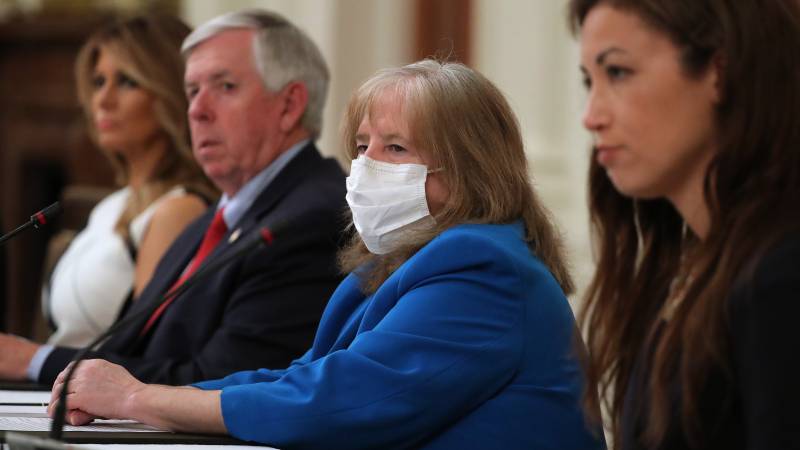[In Florida] the virus is spiking: The number of new cases daily has been alarming, as is the case in some other states. Schools are being ordered to open in-person five days a week as early as next month in Florida, so just talk me through what the argument is for a decision like that right now?
So our guidelines reflect what we know right now about COVID-19 and its effects on children, as well as our own expertise and understanding of the benefits of in-person education for children's mental, emotional and physical health. And we reevaluate these guidelines regularly, since the pandemic changes so rapidly.
But our latest guidelines articulate that our main goal is for students to be physically present at school this fall. But we also recognize that COVID-19 remains a very real, active threat to community health. And we really believe that decisions on when and how to reopen need to consider a variety of factors, but a big one is the level of virus in the community.
Well, let me just ask about that — the level of virus in the state of Florida — we saw 7,000 new cases in a single day this week. I mean, would you encourage schools to open today if that decision had to be made based on the numbers you're seeing?
The way the numbers are looking in Florida right now are concerning. The level of the virus is really high. And so a statewide mandate to reopen [schools] without consideration of community spread really goes against our recommendations.
So you think that this was not a good idea for officials in Florida to come out [Tuesday] and say, "You all have to reopen this fall?"
We know that COVID is still a dangerous virus, and it's circulating throughout the country. And there are definitely hot spots, and Florida is one of them. And so all decisions really have to be made with public health and the school officials looking at that as part of their decision-making on whether they can reopen safely.
You were at the White House [Tuesday], and the president came out and made his point of view very clear. If you see numbers in the coming weeks in places like Florida, in places like Texas and elsewhere that do not start going down, would you go back to the president and say to him, you know, that you and your organization believe that he should get back behind the microphone again and say that this is probably not a good idea?
We will be sticking to what our guidelines say — that if it does not look safe in your community to open schools, that we need to really have that looked at. We also need to make sure that schools have the needed resources to reopen safely so that a lack of funding is not a reason to keep students home, which we're hearing in a lot of communities — to do what we're asking people to do to make schools safe is not really financially feasible in some of these communities.
There have been some estimates that school systems need more than $200 billion to reopen safely. Very little, maybe $13 billion, has been made available so far by Congress. So if something dramatic does not happen and more money is not available, you would say that this was not a good idea to reopen across the country?
We know that reopening schools in a way that maximizes safety, learning, the well-being of children, staff and teachers will clearly require new investments in our schools. And we really call on our leaders: Provide the resources necessary to ensure that funding does not stand in the way of safely educating and keeping our children safe.
Some of the thinking around reopening is that the coronavirus does not affect young children as much as others. But children will be going home after school to family members who could be at serious risk. How concerned are you that if schools are open five days a week, that exposures might take place and that family members could really be at risk here?
Pediatricians and educators, we all share the same goal of wanting children to return to school. But we know that it has to be safe, and we know that we have to try to decrease that transmission as much as we can. We do know that children are less likely to get the infection. They're less likely to show symptoms. Children do get the disease. And so we do have to really look at that and be very aware.



9(MDAxOTAwOTE4MDEyMTkxMDAzNjczZDljZA004))